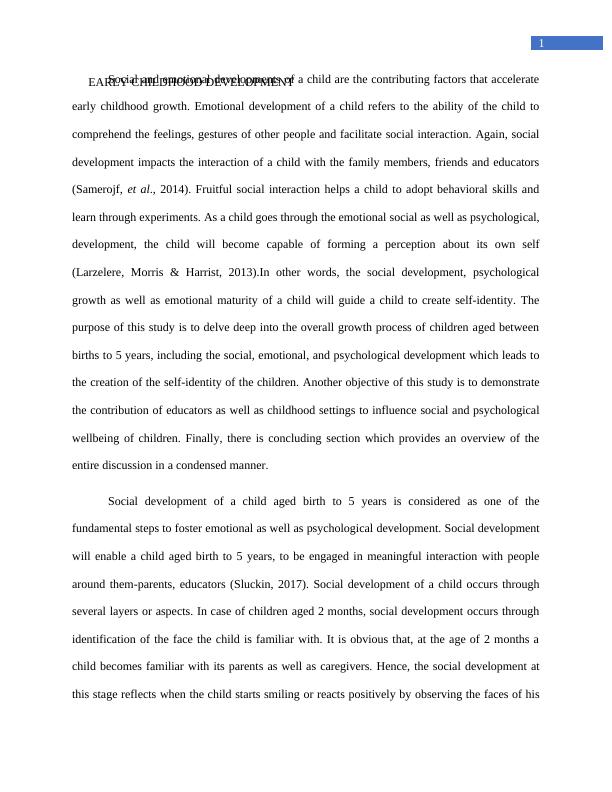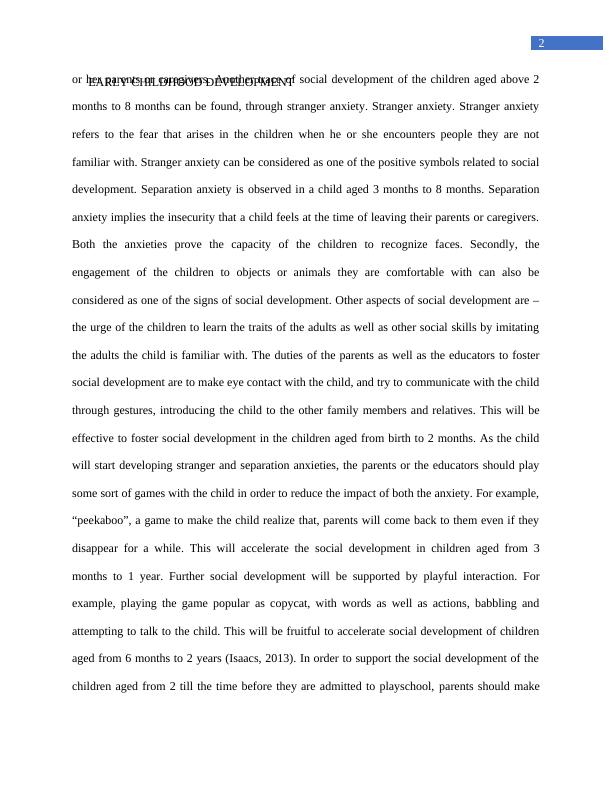Early Childhood Development
10 Pages2957 Words413 Views
Added on 2022-11-14
About This Document
This study delves deep into the overall growth process of children aged between births to 5 years, including the social, emotional, and psychological development which leads to the creation of the self-identity of the children.
Early Childhood Development
Added on 2022-11-14
ShareRelated Documents
End of preview
Want to access all the pages? Upload your documents or become a member.
Early Childhood Education and Care
|5
|1030
|56
Social, Psychological, and Emotional Aspects of Child Development
|9
|3262
|245
Influencing Factors, Children And Self-Identity
|12
|2903
|295
Comparison and Contrast between Bowlby Attachment Theory and Freud’s Psychosexual Theory of Development
|7
|1355
|461
Psychology Evolutionary Theory 2022
|6
|1454
|14
Essay on Psychological Perspective
|5
|1235
|55



